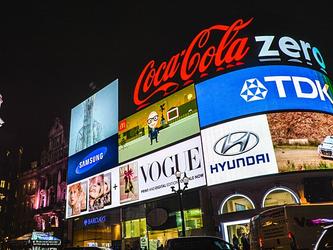Neuroscience research points to influence of digital OOH on other media
The research used brain imaging to look at the neurological impact of digital out of home on other screen and mobile devices and was carried out for outdoor media company Ocean.
Heather Andrew, CEO of Neuro-Insight (UK) said: “A previous study had demonstrated that premium outdoor sites positively primed responses to standard outdoor sites. In this new study, we set out to discover whether this priming effect worked beyond outdoor and could apply to other screen based media that is consumed out of home.
“The results were unequivocal in demonstrating strong priming impacts, but we found more than we expected. We discovered that, regardless of the creative, mere exposure to the priming medium had an impact.”
She said people who’d seen digital out of home first responded more strongly to advertising on mobile devices, even when not linked to the campaign they had seen on DOOH, than those who’d been exposed to television.
“We call this the congruence effect because it demonstrates for the first time the importance of environment and the power of “brainstate” on people’s responses to advertising, ” added Andrew.
Methodology
The study sample consisted of 192 people, equal men and women, aged 18- to 65-years-old. People were convened in groups of eight in London and Birmingham.
It included a control; while some people were exposed to DOOH ads, others were exposed to ads from the same campaigns on television. Two advertising campaigns for Peugeot and Lynx were deployed and the sample split further so that half the people from both the DOOH and TV groups saw each campaign at the priming media stage.
Prior to brain readings taking place, people were exposed to advertising for one of the two brands, either on a DOOH site or on television. People only saw the digital site by walking past it on the way to the study location from a pre-arranged meeting point, and saw the TV ad in a programme that was aired “in the background” in a holding room prior to the research session starting. In neither case was people’s attention explicitly drawn to the medium or the advertising messages.
Respondents were then were exposed to branded messages for the two featured brands in magazines and on iPads. Using this approach, neuroscientists were able to compare responses to magazine and mobile online ads between the two groups.
In each case, they could examine responses to unlinked advertising and responses to ads from the same campaign.
The study found that prior exposure to a creative campaign on television led to higher levels of response when another execution from that campaign was subsequently seen in a magazine. Prior exposure to a creative campaign on a full motion digital OOH site led to higher levels of response when another execution from that campaign was subsequently seen on a mobile screen.
But the reverse is not true; television does not prime responses to mobile screens and OOH does not prime responses to magazines.

We hope you enjoyed this article.
Research Live is published by MRS.
The Market Research Society (MRS) exists to promote and protect the research sector, showcasing how research delivers impact for businesses and government.
Members of MRS enjoy many benefits including tailoured policy guidance, discounts on training and conferences, and access to member-only content.
For example, there's an archive of winning case studies from over a decade of MRS Awards.
Find out more about the benefits of joining MRS here.












0 Comments